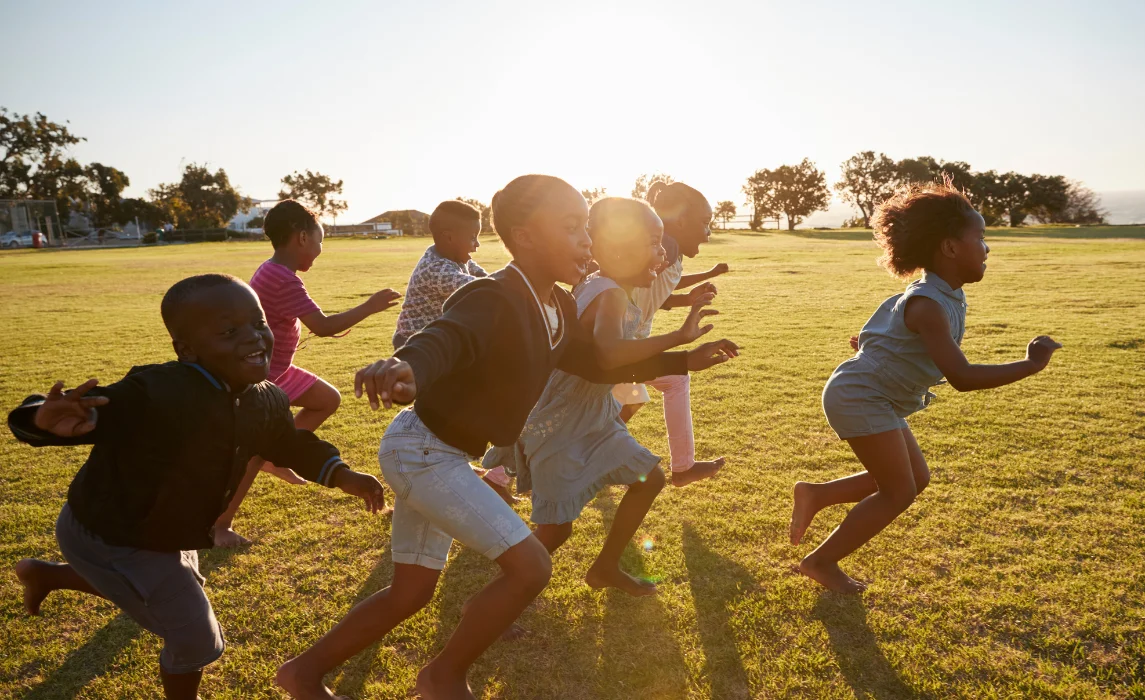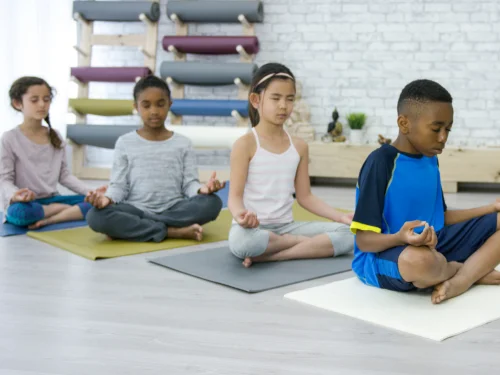Why Do Kids Have So Much Energy? What Parents Need to Know

Yes—finger plays, clapping games, and dance routines that use hand gestures all help. Combine rhythm and repetition for deeper learning.
Send home simple activity ideas, kits, or worksheets. Offer short instructions and encourage family involvement. Regular practice builds lasting progress.
Try origami, sticker scenes, stringing pasta, or painting with Q-tips. Crafts that use small pieces build precision and control.
Parenting often feels like keeping pace with a marathon runner—especially when your child seems to have endless reserves of energy. If you’ve ever asked yourself, “Why does my child never stop moving or talking?”, you’re not alone. The truth is, children are wired for high activity, and their buzzing energy serves a critical role in their growth and development.
Let’s break down what’s really going on behind all that bouncing, fidgeting, and endless chatter.
The Science Behind Their Energy
.webp)
1. Supercharged Metabolism
Research shows that young children burn energy at a rate far higher than adults. In fact, toddlers between 9 and 15 months expend up to 50% more energy daily than grown-ups, even after adjusting for body size. This is because their rapidly developing brains and organs are like little furnaces, demanding constant fuel.
Children aren’t just “smaller adults”—their bodies are uniquely designed to burn through calories quickly, supporting intense growth, development, and learning.
2. Brain Growth as an Energy Hog
A child’s brain is astonishingly active. Studies suggest that in early childhood, the brain alone uses up to 40% of the body’s total energy. Every new skill, word, or social interaction strengthens neural pathways. What might look like “nonstop talking” or “aimless play” is actually the brain hard at work, processing and building connections.
3. Still Developing Self-Regulation
Adults know when to pause, rest, or hold back. Children are still learning this skill. Their self-regulation systems are immature, which means they often push through tiredness, talk long after bedtime, or keep running even when their bodies are ready for rest. With time, and support from caregivers, these skills improve.
Why Kids Move (and Talk) So Much
.webp)
Movement Is Learning
Children don’t just want to move—they need to. Physical activity helps them:
- Strengthen muscles and coordination
- Improve balance and motor skills
- Release stress and regulate emotions
Jumping off the couch or running around the yard isn’t just play—it’s how they master their bodies and environment.
Talking Fuels Development
That endless stream of questions, observations, and stories? It’s not random. Talking helps children:
- Practice language and communication skills
- Process emotions and experiences
- Make sense of the world around them
To kids, silence feels unnatural. Their words flow as fast as their thoughts, and constant chatter is part of healthy development.
The Role of Environment
Children’s energy doesn’t exist in a vacuum. Their surroundings shape it:
- Stimulation – A busy classroom, exciting playdate, or new environment can spike energy levels.
- Diet and sleep – Sugar, caffeine (yes, even from chocolate), and inconsistent sleep routines can amplify hyperactivity.
- Screen time – Too much screen exposure can leave kids restless, with “unused” physical energy to burn off.
A balanced environment—with active play, healthy meals, and consistent rest—helps regulate energy more smoothly.
When High Energy Is Normal (and When to Be Concerned)
.webp)
Most of the time, high energy in kids is simply part of growing up. But there are moments when parents may want to pay closer attention. Signs that energy may be linked to something deeper include:
- Inability to wind down even when clearly tired
- Frequent emotional meltdowns or irritability tied to lack of rest
- Trouble focusing at school or during quiet activities
- Persistent sleep difficulties
In such cases, underlying conditions like ADHD, anxiety, or sensory processing differences could play a role. Seeking advice from a pediatrician or child development specialist can provide clarity.
You May Also Like: 6 Coping Skills for Kids: Helping Children Navigate Big Feelings
How Parents Can Support Energetic Kids
.webp)
Managing all that energy isn’t about stopping it—it’s about channeling it. Here are a few practical ways to help your child thrive:
- Create a routine – Predictable schedules with set times for meals, play, and rest help kids find balance.
- Encourage active play – Outdoor time, sports, or even indoor dance breaks allow children to burn energy constructively.
- Offer creative outlets – Activities like drawing, building, or pretend play engage the brain and body.
- Teach calming strategies – Deep breathing, stretching, or quiet reading can introduce self-regulation skills.
- Prioritize sleep – Consistent bedtime routines and screen-free evenings support healthy rest.
You May Also Like: 15 Gross Motor Activities: Building Strength, Balance, and Confidence in Kids
The Big Picture
.webp)
Children’s seemingly endless energy isn’t a flaw—it’s a feature. It reflects growth, curiosity, and a natural drive to explore. While their boundless activity can be exhausting for parents, it’s also a reminder of the incredible pace of development happening beneath the surface.
Over time, as kids grow and their ability to self-regulate strengthens, their energy will find a more balanced rhythm. Until then, embracing their enthusiasm—and providing safe, structured ways to use it—can make life easier for both kids and parents.
So next time your child is running, climbing, and chattering all at once, take a breath and remember: their energy is proof of a healthy, growing mind and body.
You May Also Like: 20 Indoor Physical and Dexterity Challenges for Kids: Fun, Movement, and Skill-Building All Year Round




